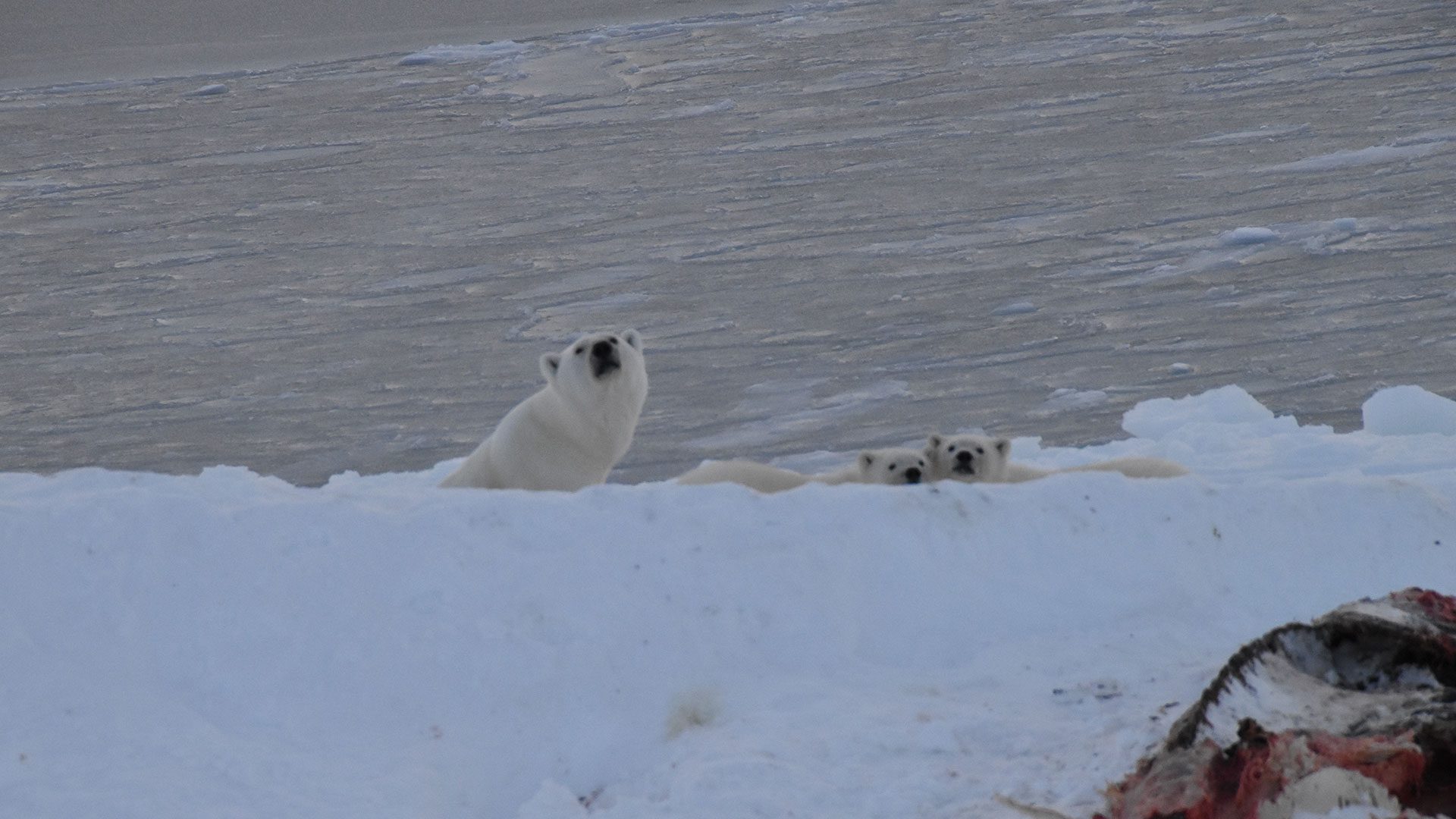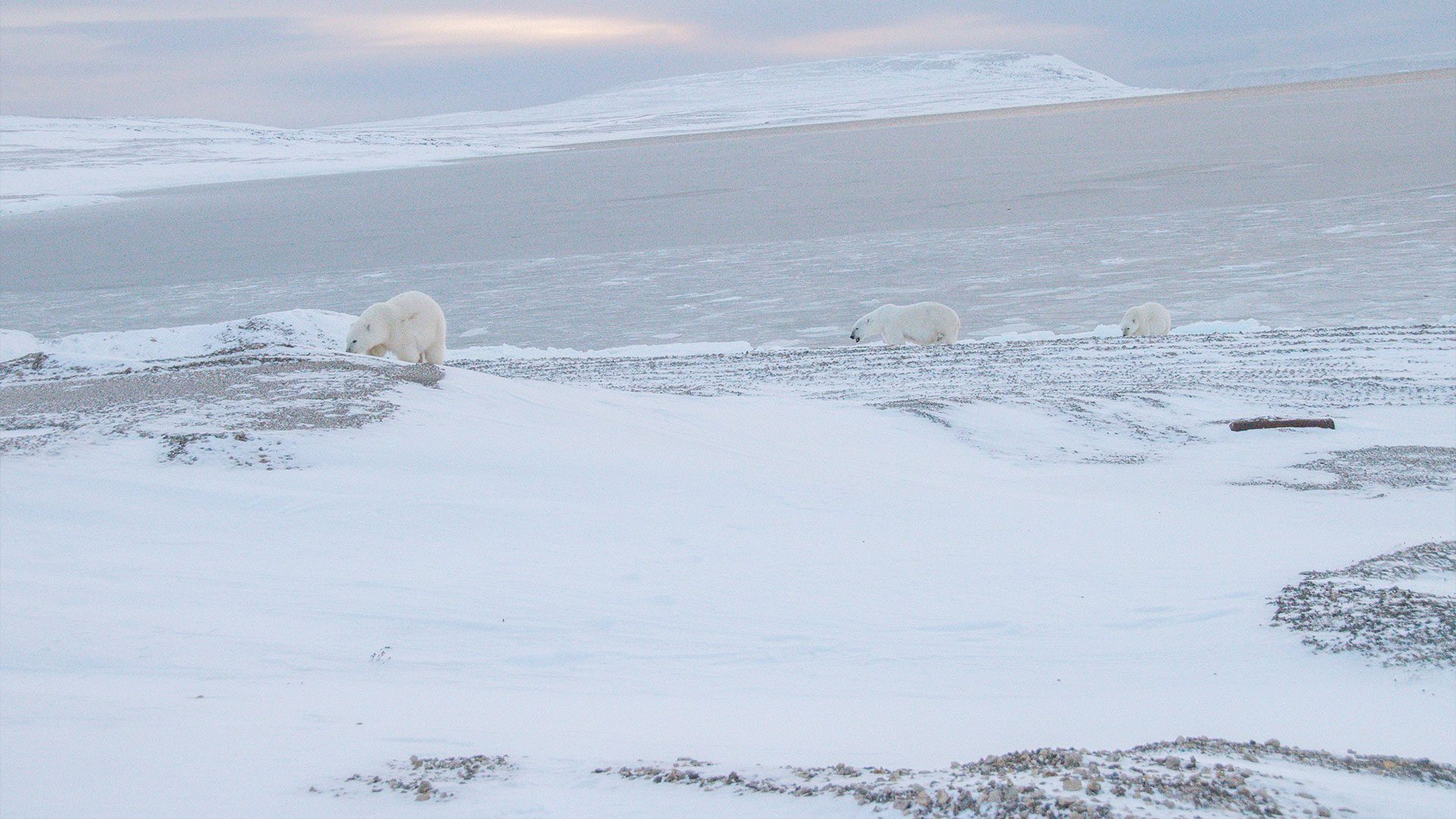On the ice just outside Resolute Bay, Nunavut, three polar bears rest after feasting on a whale carcass left by hunters.
Bears are regularly seen in many of these communities in the high Arctic.
“There’s a whole bunch and they’re all healthy-looking, all big, their stomachs are almost touching the ground,” said Aasta Idlout, a community member in Resolute Bay, one of the most northerly communities in Canada.
In the 1990s, with the bear population dropping, Inuit reduced the number of bears hunted and scientists and the government started paying attention to their knowledge and observations.
The Inuit also know a lot about polar bear safety.
“I have always been scared of polar bears. To this day they have my highest respect,” said Peter Amarualik.
“I’ve seen people with scars from where their face was attacked by bears.”
Amarualik had many stories about polar bears, including an encounter with his uncle who tried to chase a polar bear away and it turned on him.
“The bear came up to him and he went down and covered his face. The bear bit his bum and threw him away. That is one of the stories I heard about,” he said.
He said his father also taught him to pay attention to the ears when you encounter a bear.
“When their ears are up on top of their head they are listening … the aggressive ones tend to have their ears tucked right close against their head, like dogs,” said Amarualik.
Stability in the polar bear population

Polar bears in this area belong to the Lancaster Sound subpopulation. The population’s health is considered “uncertain.” The last survey reported 2,541 animals in this region.
But one reason for the current status of the bears is that thinning sea ice is making more food available for polar bears to feast on. In years past, four-metre-thick “old sea ice” stayed year-round. But with warming temperatures, that old ice is replaced by “new ice” and it’s thinner.
According to the World Wildlife Fund or WWF, this “opening of the ocean means higher productivity: more algae, zooplankton, fish and seals — and better hunting opportunities for polar bears.”
“Scientists found that recovery efforts are paying off and the bears have, at least temporarily, responded well to changes in Arctic sea ice,” said the WWF in a 2020 post online. “This is reflected in their body conditions — bears are fatter than they were in the mid-to late-1990s — and increasing or stable in population over the past two decades.”
While the Lancaster Sound numbers are stable and others rising, the continued loss of sea ice habitat because of climate change is expected to make a significant impact by 2030 – the earliest scientists expect that in the summer, the Arctic will be ice-free.
Bears use the ice for everything from meeting a mate to transportation and hunting. No ice means they’ll be on land – and in communities – more often.
According to a report published in October by the University of Toronto, the U.S. Geological Survey and Polar Bears International, the more time bears stay on land, the less healthy they are.
Its study found that “when melting sea ice forces polar bears to spend more time fasting on land, polar bear mothers produce lower-energy milk or stop producing milk for their cubs altogether.” The report linked time fasting on land to what a mother can provide.
“Polar bear lactation is crucial to the survival of cubs but is still not well-understood. These results may also affect our understanding of other long-lived species that must nurse offspring without access to food.”
The difference between bears

“The Churchill or Hudson Bay population are some of the most studied in the world but there’s broad generalizations that are made,” said Brandon Laforest who is a polar biologist by training and works for the WWF as a lead specialist for the Arctic. “It is difficult to say to the public there are 19 sub-populations and they are all acting a little bit differently.
“I have learned through living in Iqaluit the intense frustration that comes from the dominant media around bears.”
Laforest told APTN that there is frustration in Northern communities about conservation and polar bears when there are stories about starving bears that appear to represent the entire polar bear population.
“That is frustrating to local people who see different situations on the ground. In the Hudson Bay population, you do see the effects of climate change … science is pretty clear … from Resolute and Grise Fiord those bears are actually doing well because of climate change and the opening up of the sea ice habitat and the increase of productivity in that area but that is thought to be transient.”
He also said that some of the difficulty of talking about climate change issues comes from the reality that some of the changes being talked about will happen in several decades.
“We are talking to issues that are probably closer to 2100 than 2000 which I think is difficult for people to grasp … barely anyone alive today will be around to see it.”
Read More:
‘We can’t be on the ice safely’: Inuit hunters say climate change is changing their lives
According to Environment Canada, the federal agency that leads studies on climate change at a federal level and works on conservation projects has previously said that summer ice is thawing. According to Canada’s website, “Sea ice in the Canadian Arctic is decreasing rapidly. Between 1968 and 2015, the summer sea ice area in northern Canadian waters decreased by nearly 7% per decade on average.”
A 2023 article in the peer-reviewed scientific journal Nature has said that it is projected by 2030 the Arctic Ocean will lose all summer sea ice, even if humans drastically cut carbon emissions.
“Previous studies have tried to forecast how soon the Arctic will be ice-free at the end of the summer,” said the article. “The observations showed that human activities are already having an impact on Arctic sea ice all year round. The simulations predicted that the Arctic could be ice-free by the end of the summer in even the lowest-emission scenarios. This could occur as early as 2030.”
According to the Committee on the Status of Endangered Wildlife in Canada, or COSEWIC, “Polar Bears are listed as Vulnerable in both Québec and Newfoundland and Labrador. Polar Bear are not listed in Nunavut, or Yukon. Polar bears are considered Threatened worldwide under the USA Endangered Species Act and listed as a globally Vulnerable species under the IUCN Red List.”










